26+ Sample IT Strategic Plan
-
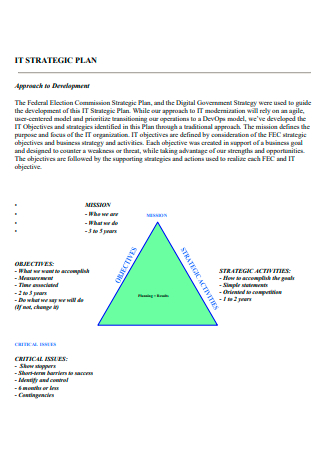
IT Strategic Plan Template
download now -
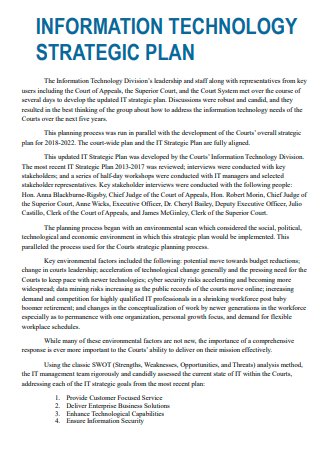
Essential Information Technology Strategic Plan
download now -
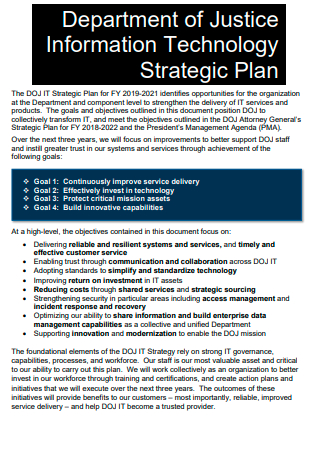
Department of Justice Information Technology Strategic Plan
download now -
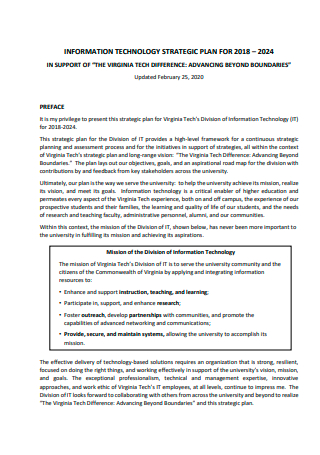
Printable Information Technology Strategic Plan
download now -
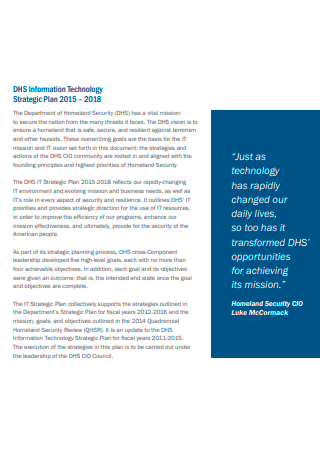
Information Technology Strategic Plan Example
download now -
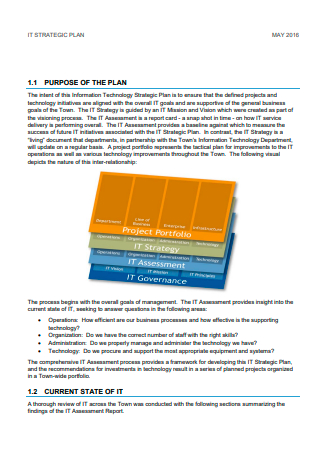
Standard IT Strategic Plan
download now -
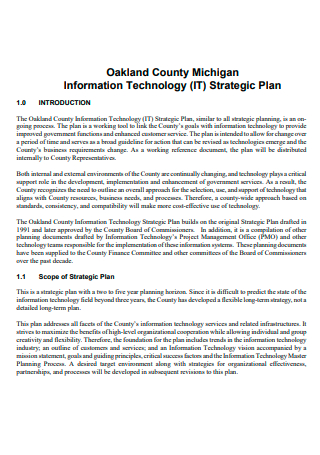
Information Technology Strategic Plan Format
download now -
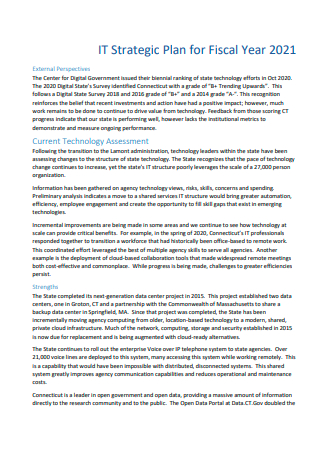
Simple IT Strategic Plan
download now -
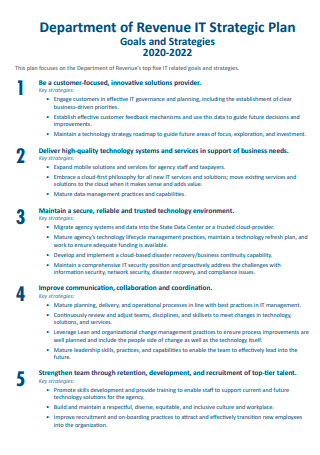
Department of Revenue IT Strategic Plan
download now -
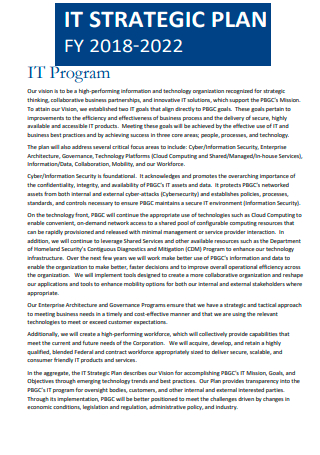
IT Program Strategic Plan
download now -
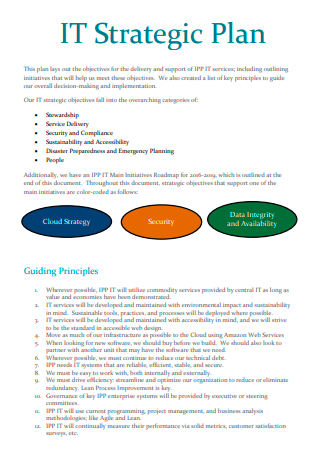
Formal IT Strategic Plan
download now -
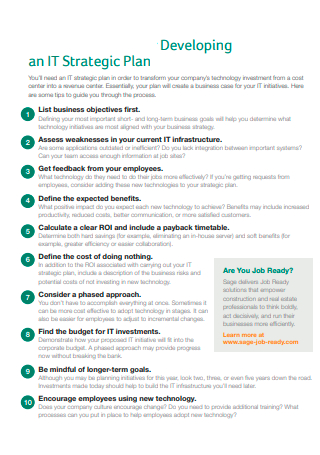
Developing an IT Strategic Plan
download now -
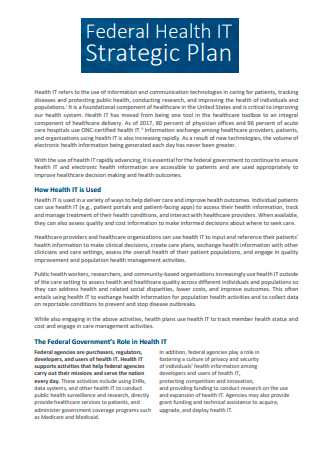
Federal Health IT Strategic Plan
download now -
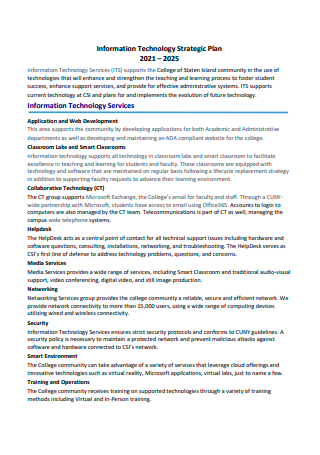
Draft Information Technology Strategic Plan
download now -
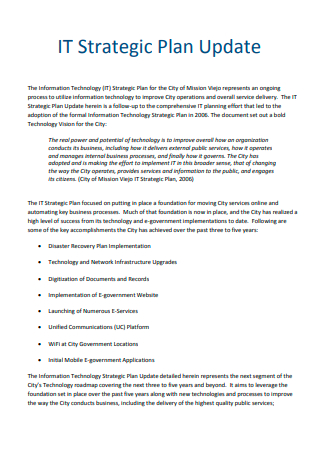
IT Strategic Plan Update
download now -
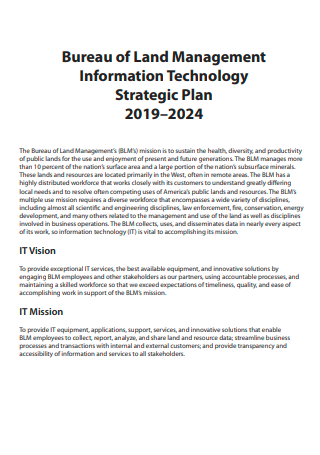
Land Management Information Technology Strategic Plan
download now -
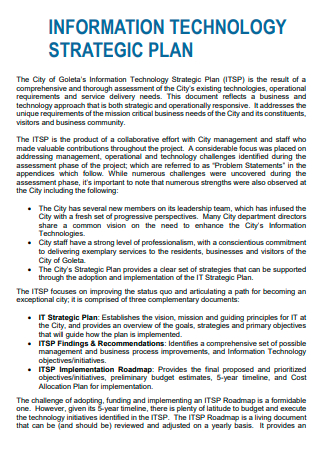
Sample Information Technology Strategic Plan
download now -
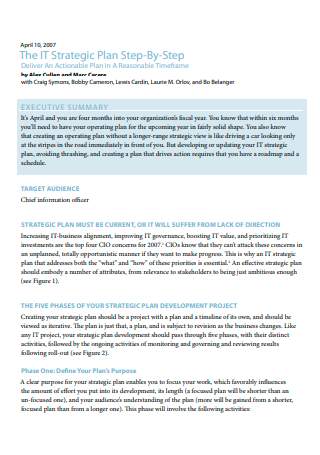
Step-by-Step IT Strategic Plan
download now -
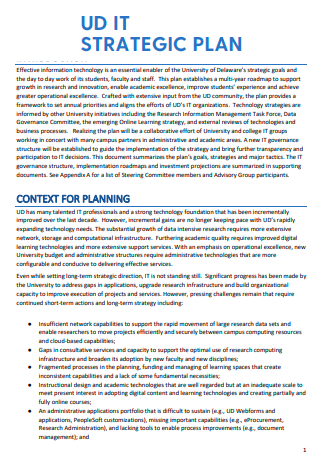
Simple IT Strategic Plan
download now -
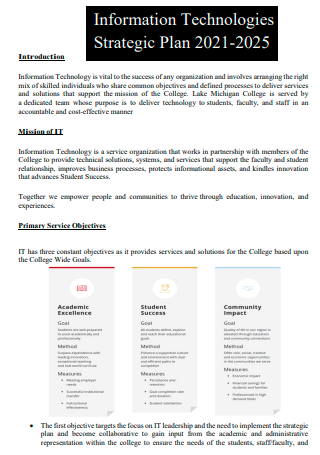
Information Technologies Strategic Plan
download now -
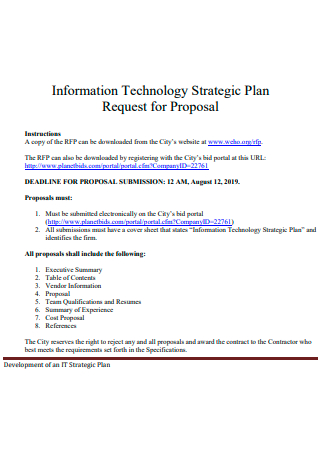
Information Technology Strategic Plan Request For Proposal
download now -

University Information Technology Strategic Plan
download now -
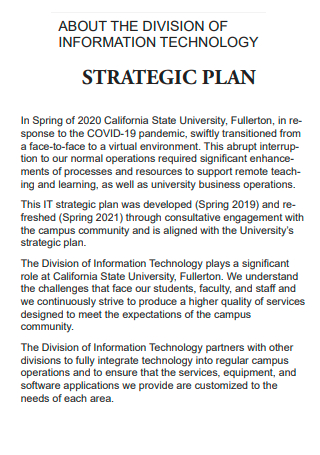
Division of Information Technology Strategic Plan
download now -
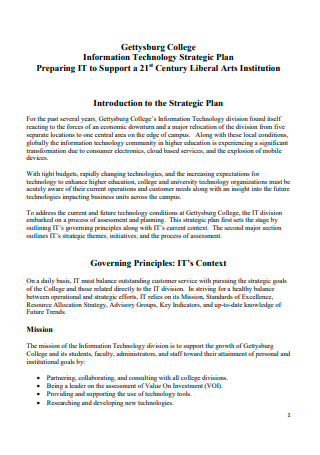
College Information Technology Strategic Plan
download now -
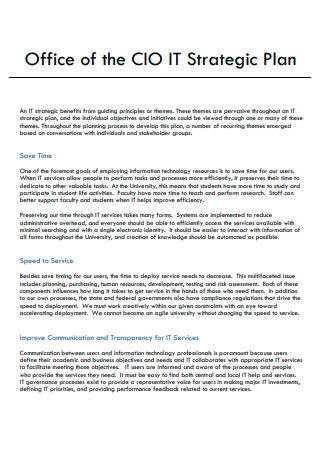
Office of IT Strategic Plan
download now -
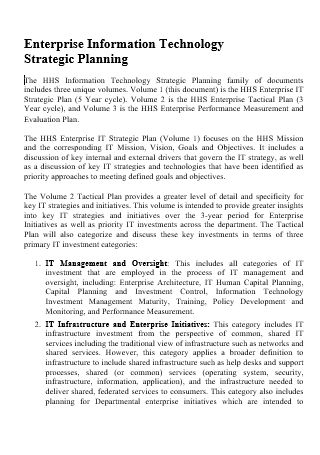
Enterprise Information Technology Strategic Planning Template
download now -
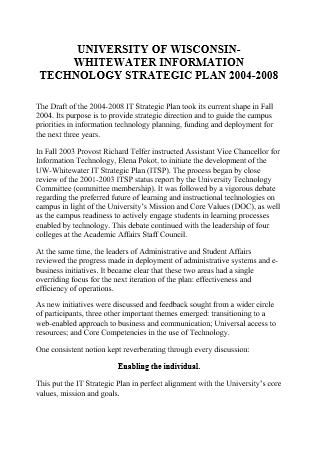
Information Technology Strategic Plan in DOC
download now
FREE IT Strategic Plan s to Download
26+ Sample IT Strategic Plan
an IT Strategic Plan?
Benefits of IT Strategic Planning
Components of an IT Strategic Plan
How To Process Strategic Planning
FAQs
What constitutes a sound information technology strategy?
What are the IT company’s strategic objectives?
What is an information technology team?
What Is an IT Strategic Plan?
An IT strategic plan is a record that defines an organization’s comprehensive technology-enabled business management processes. It acts as a guide for making information technology-related decisions, with IT tasks prioritized and implemented using the plan as a framework. Additionally, the plan serves as a roadmap for a business as it develops its overall information technology strategy. While an IT strategy focuses on how IT will assist the company in achieving success, an IT strategic plan serves as a road map for implementing those strategies. The strategy identifies areas where information technology may add value to the business and where an organization can obtain a competitive edge by maximizing technological resources. Many studies have discovered that most strategic planning fails, with some estimates putting the figure as high as 67 percent. It’s because the typical approach to strategic planning is entirely backward.
Benefits of IT Strategic Planning
We have all certainly been involved in a strategic planning process at some point in our lives. Occasionally, planning goes well, and sometimes, it does not. Frequently, a strategic plan devolves into what I describe as a “dustable” document. Dunstable’s are those small trinkets scattered about your grandmother’s house that collect dust. You glance at them occasionally and dust them off, but then they return to the shelf. If this is the fate of most strategic plans, then why do we construct them in the first place?
Components of an IT Strategic Plan
So, what does an example of an IT strategy look like? Let us begin with some of the fundamental components. This sample IT strategy document can be customized to match the unique requirements of a particular firm.
How To Process Strategic Planning
Strategic planning is critical to a business’s long-term success. A corporation with a strategic plan can more effectively direct its energies and resources toward reaching a goal. Consider the seven stages below to assist you in developing practical, actionable strategies:
-
1. Recognize the value of a strategic plan
The first and most essential action in the planning process recognizes the necessity of a plan. In terms of management, this means that you must be familiar with the industry context in which your organization operates to find development prospects. Also, you must be familiar with the business’s internal procedures to recognize when a problem has to be resolved. After identifying opportunities, you can begin considering actions that will enable you to capitalize on those opportunities. For instance, the government may be soliciting bids from enterprises in your industry. You can devise a strategy to assist your organization in bidding if you know this.
2. Establish objectives
The second step in the strategic planning strategy is to establish goals. Depending on their purpose, plans can be found for both specific departments and the entire firm. Meanwhile, a department’s objective would boost particular performance indicators, such as sales or customer happiness. While an organization’s goals can be broad, while defining departmental goals, you must be comprehensive and explicit so that your team members understand what they need to perform. For instance, while growing profits may be a corporation’s aim, individual departments will require more specific targets. Goals are critical to the strategic planning process because they enable managers to steer their teams more effectively. They provide employees with a single destination to strive for, which helps to focus their everyday efforts.
3. Create hypotheses or premises
When creating a company plan, keep the future in mind. Naturally, because the future is unknown, your project must be predicated on some assumptions or premises. A forecast is a familiar premise in which specific predictions are made. If the company’s objective is to expand earnings, management must estimate whether the industry can support the increase. External premises are anything outside the business that could affect the plan and accomplish established objectives. When attempting to achieve an organizational goal, all managers must operate under the same premises and agree on them.
4. Conduct research into alternative methods of accomplishing goals.
Typically, there are multiple distinct paths to achieving a goal. You’ll need to invest time in researching numerous strategies your team could use to accomplish a specific target. Researching alternative methods of achieving a goal is critical since managers have leeway when directing their teams. Certain managers may prefer novel approaches to accomplishing goals, while others prefer more traditional techniques. When evaluating alternative methods for achieving goals, the purpose should be to restrict the field of possibilities to a few viable ones. As previously stated, there are likely innumerable choices for reaching the established goals. If you do not reduce the options, your managers will find it challenging to choose an effective solution. Once you’ve chosen a few potential paths to your goals, it’s time to thoroughly investigate each one to determine which is the incredible alternative. You should carefully analyze the advantages and disadvantages of each solution, particularly with your business’s established goals. Consider that you are creating a financial plan for your business. It will help analyze the risks and potential returns associated with each feasible option. Additionally, you would need to assess each alternative you choose to determine if it will assist you in achieving your final target efficiently.
5. Determine your course of action
After you’ve defined your objectives, built your premises, and found or analyzed alternative alternatives for achieving your goals, you can decide on a path of action. The strategic strategy you adopt will be the most profitable in an ideal world. When choosing a course of the act, you should rely heavily on empirical evidence, such as quantitative analysis. Your experience as a manager can also assist you in determining the best strategy for achieving your specified objectives. Using your personal experience, you may discover that one of the strategies under consideration is something you have seen performed in the past and know to be beneficial.
6. Create an auxiliary plan
Once you’ve decided which plan to implement, you may also need to build a secondary plan to assist you in implementing the preliminary plan. Secondary programs will vary according to your objectives, so keep them in mind as you create this additional plan. If your company’s goal is to introduce a new product, your primary project may involve conducting market research, devising a marketing strategy, and arranging for manufacture. The secondary plan will outline all steps necessary to support the immediate plan’s implementation.
7. Put the strategic plan into action
The final stage of the strategic planning method is to put the strategy into action. Depending on the objectives you’ve established, this may be the most time-consuming step in planning. When it’s time to plan into action, managers rely on their skill set and experiences to ensure that everything goes successfully. If the organizational goal is particularly complex, managers must devote sufficient time to ensure that team members understand their roles and fit into the larger picture. All team members must be informed and collaborate to ensure success.
FAQs
What constitutes a sound information technology strategy?
A good IT strategy strikes a balance between two objectives: daily operations support and future development. Some IT and business leaders are solely concerned with immediate issues and do not take the time to develop a long-term strategy.
What are the IT company’s strategic objectives?
A strategy is a long-term project you develop to achieve the desired future condition. A strategy outlines your business’s goals and objectives, the products/services you intend to build, the clients you wish to sell to, and the marketplaces in which you intend to profit.
What is an information technology team?
Network architects, analysts, engineers, and hardware experts comprise a networking team. A popular subset is the computer systems administration team, which provides help to end-users through the configuration and maintenance of computers, operating systems, and other network-connected applications.
Numerous strategic sales plan templates are available online to be downloaded, altered, and personalized to your exact specifications and needs. There are multiple pre-made and print-ready templates available in Word and PDF formats. Strategic planning will assist you in determining how to prepare for your company’s growth in the most effective manner. This will alleviate the stress associated with developing new plans from scratch. Ensure that you select the appropriate template for editing and customize it to your liking.
